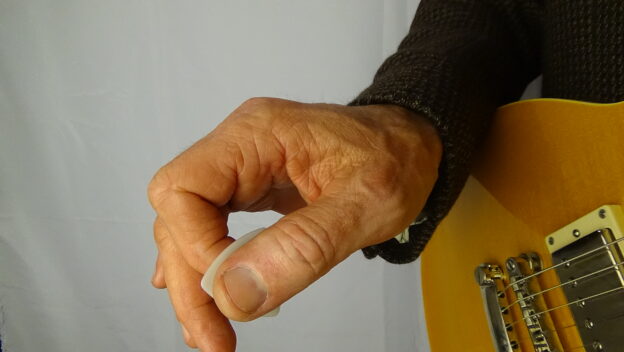By Chad Crawford, PMI Guitar Instructor
Playing fast solos seems to be a consistent goal for many aspiring guitarists. I discourage over-emphasis on speed to the neglect of other aspects of musicianship, but speed does have its place. A well-executed lick in sixteenth note triplets can add a great deal of intensity to a piece, and it is just plain fun!
So how do accomplished guitarists develop the ability to control the playing of notes at speeds faster than it seems possible for human fingers to move? There are a number of components of speed, and a number of ways to develop speed. I will break them both down for you here.
Components of speed:
- Excellent technique – precise placement of the fingertips, including being able to change smoothly between varying techniques such as scales and vibrato
- Timing – sounding out a note or vibrato at the correct time in regards to the underlying rhythm
- Two-hand synchronization – precise coordination of the two hands such that the pick stroke coincides exactly in time with the fretting finger
- Tricks – legato (hammers/pulls-offs), tremolo picking, tapping, sweeps
- The mental side – knowing what you intend to play (as opposed to wandering through scales), how it is going to sound before you play it, the location of your notes within a scale, the location of your next resolving note and all notes in between, etc.
Methods for developing speed:
- Know your scales – If you are struggling to simply remember the basic scales and/or resolving notes for the style you wish to play then you will suffer constant hesitation. This will throw off your two hand synch and drag you out of time. What you will experience is a feeling that your hands are not doing what you wish them to do. What is actually happening is that your hands are doing exactly what you are telling them to do, which is to play the confused slop that your brain is manufacturing. Get on top of your mental game!
- Know your rhythms – Practice playing phrases in good time at varying paces: eighths, sixteenths, and triplets.
- Slow metronome drills – the metronome is a powerful tool for developing great timing and two-hand synchronization. Practice your varying rhythms in conjunction with a metronome beat, at very SLOW speeds (40-60 beats per minute). Concentrate closely on removing all unnecessary movement and muscle tension from your playing, and coordinating your hands such that the pick stroke occurs at precisely the same instant as fret finger placement.
- Fast metronome drills – once you have developed a particular scale or technique to a point that you can perform it well consistently at these very slow speeds, begin slowly increasing the tempo of the metronome as you play along.
- Go back to number one and repeat. And repeat. And repeat. Etc.
Take careful note of item 3 of the methods for developing speed. Just because you are aware that tension is detrimental to speed does not mean that your body is going to automatically relax and allow you to play well at higher speeds. You will have to spend time practicing at very slow speeds and specifically paying attention to excess tension in your fingers, wrists, forearms, upper arms, shoulders, back, and neck. You will be surprised when you do this as to how much you are tensing up all over when playing. Relax all of this tension and practice while consciously relaxed, until this becomes a habit such that you do it automatically.
Copyright © 2005 Palmetto Music Institute. All Rights Reserved.

